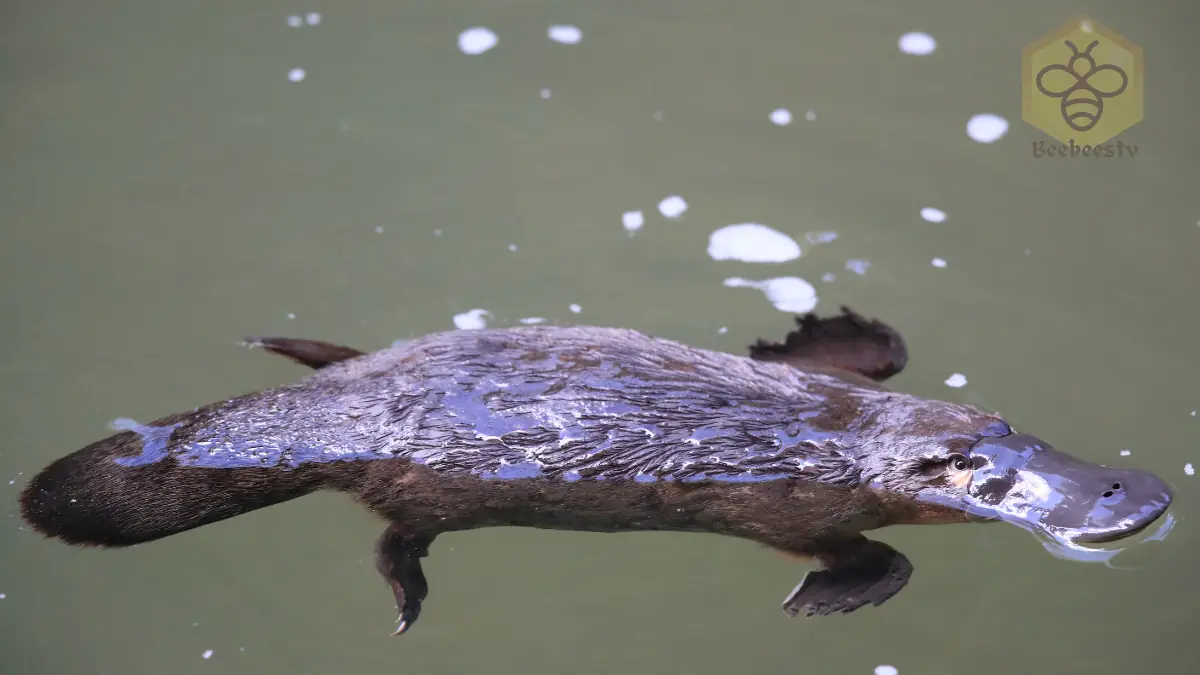Platypus: Nature’s Most Unique Mammal
Platypus
The platypus is an extraordinary creature, known for its duck-bill, webbed feet, and otter-like body. This semi-aquatic mammal is one of the only egg-laying mammals, fascinating scientists and nature enthusiasts alike. Native to Australia, the platypus plays a unique role in its ecosystem.
Scientific Overview
Scientific Name
Ornithorhynchus anatinus
Common Name
Platypus
Scientific Classification
| Kingdom | Animalia |
| Phylum | Chordata |
| Class | Mammalia |
| Order | Monotremata |
| Family | Ornithorhynchidae |
| Genus | Ornithorhynchus |
| Species | O. anatinus |
Types
The platypus does not have subspecies, but as a monotreme, it belongs to a unique group of mammals that lay eggs, alongside echidnas.
Habitat and Distribution
Habitat
Platypuses live in freshwater environments such as rivers, streams, and lakes. They prefer areas with stable water levels, abundant vegetation, and steep riverbanks for burrowing.
Geographic Distribution
Native to eastern Australia, platypuses are primarily found in Queensland, New South Wales, Victoria, and Tasmania. Their habitat ranges from tropical rainforests to alpine regions, as long as water sources are available.
Physical Characteristics
Size and Weight
Platypuses typically measure 15 to 24 inches in length, with males weighing between 2.2 and 5.3 pounds and females weighing slightly less. Males are generally larger than females.
Appearance
The platypus has a streamlined body, covered in dense, waterproof fur. Its most distinct features are its flat, duck-like bill and webbed feet. The tail is broad and flat, used for the storage of fat reserves.
Diet and Feeding Habits
Diet
Platypuses are carnivorous, primarily feeding on aquatic invertebrates such as insects, worms, and small crustaceans. They use their bill to sift through sediment at the bottom of water bodies for food.
Feeding Behavior
Using their sensitive bills, platypuses detect prey by picking up electric signals. They store food in cheek pouches, then surface to chew and swallow.
Predators and Threats
Natural Predators
Natural predators of the platypus include birds of prey, such as eagles, as well as crocodiles and snakes. Juvenile platypuses are especially vulnerable to predation.
Human Threats
Humans pose threats through habitat destruction, pollution, and climate change, which affects water availability. Additionally, invasive species such as foxes have become a threat to young platypuses.
Reproduction, Babies, and Lifespan
Mating Behavior
Platypuses typically mate between June and October. Males engage in courtship by following females, who lead them in an underwater courtship “dance.”
Babies
Female platypuses lay 1 to 3 eggs and incubate them in a burrow for about ten days. After hatching, the young are dependent on their mother for milk, which they absorb through pores in her skin.
Lifespan
The average lifespan of a platypus in the wild is 10 to 15 years, although some individuals in captivity have lived over 20 years.
Population and Conservation Status
Population Size
Platypus populations are difficult to estimate accurately but are believed to be in decline due to habitat loss and climate change.
Conservation Status
The platypus is listed as Near Threatened on the IUCN Red List, with efforts underway to protect its freshwater habitats and address environmental threats.
Behavior and Lifestyle
Daily Activities
Platypuses are primarily nocturnal and crepuscular, meaning they are most active during dusk, dawn, and nighttime. They spend much of their time foraging underwater or resting in burrows.
Communication
Platypuses have limited vocal communication, relying more on body language and chemical signals to interact with one another, especially during mating season.
Ecological Role
Importance in the Ecosystem
As predators of aquatic invertebrates, platypuses help regulate the populations of various freshwater species, maintaining balance in their ecosystems.
Impact on Humans
The platypus has inspired scientific research, as it possesses unique evolutionary traits. Conservation of the platypus also contributes to the preservation of healthy freshwater systems that benefit human communities.
FAQs About Platypuses
- Do platypuses lay eggs?
Yes, they are one of the few mammals that lay eggs.
- Are platypuses venomous?
Yes, males have venomous spurs on their hind legs.
- Where do platypuses live?
Platypuses are native to eastern Australia, including Tasmania.
- What do platypuses eat?
They primarily eat aquatic invertebrates.
- How long do platypuses live?
They can live up to 15 years in the wild.
Conclusion
The platypus is one of the most unique mammals, with its mix of aquatic and terrestrial adaptations and egg-laying reproductive strategy. As a species facing environmental challenges, the platypus is a vital indicator of freshwater ecosystem health in Australia. Conservation efforts are crucial to ensure the survival of this remarkable species for generations to come.
